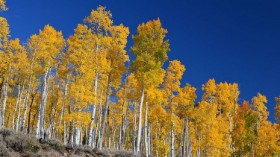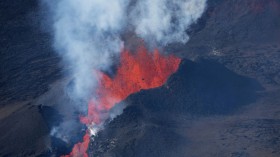No, trees won't be thrusting out their collective branches to gently catch the next unlucky skydiver with a defective parachute, but they have been cleaning our air. The US Forest Service has just released a report that says that the worlds trees are saving an estimated 850 human lives a year by preventing acute respiratory symptoms.
Aside from the fact that we'd all soon be choking on very thin air if all the trees just up-and-left tomorrow (would they be singing "so long and thanks for not chopping me down"?), trees apparently also help clean our air so well that they collectively prevent an estimated 670,000 incidents of acute reparatory symptoms and 850 potential deaths annually.
Amazingly, that substantial preventative power only comes from pollution removal equating to a less than 1 percent improvement in air quality, the US Forest Service reports.
A new research study conducted by the Forest Service's Northern Research Station (NRS) discovered these statistics and more after assessing the prevalence of nitrogen dioxide, ozone, sulfur dioxide, and fine particulate matter (like ash). These are four pollutants the Environmental Protection Agency has established air quality standards for, as they pose significant threats to human health.
According to the NRS, trees help reduce the levels of these pollutants in the air by cycling toxins and physically catching particulates.
"With more than 80 percent of Americans living in urban area, this research underscores how truly essential urban forests are to people across the nation," Michael T. Rains, Director of the NRS and the Forest Products Laboratory, said in a statement. "Information and tools developed by Forest Service research are contributing to communities valuing and managing the 138 million acres of trees and forests that grace the nation's cities, towns and communities."
According to the report, trees' 1 percent pollution mitigation also saves an estimated $7 billion in health costs by preventing illness, making them well worth the effort to place them in highly polluted regions such as urban settings.
The entire study "Tree and Forest Effects on Air Quality and Human Health in the United States," is available online at: https://www.nrs.fs.fed.us/pubs/46102
© 2024 NatureWorldNews.com All rights reserved. Do not reproduce without permission.




